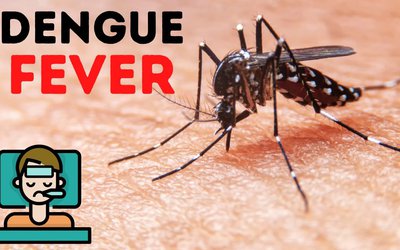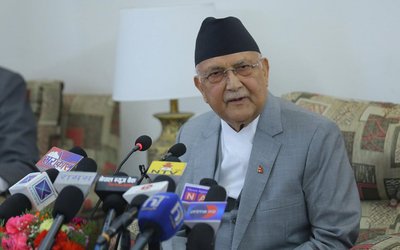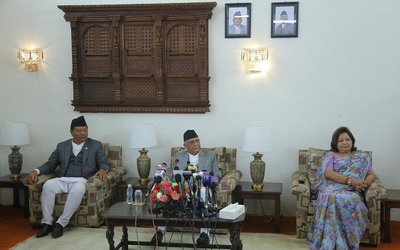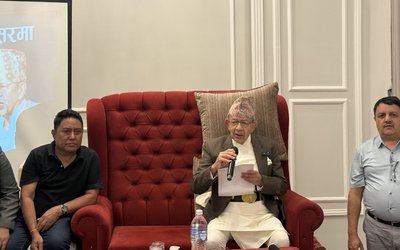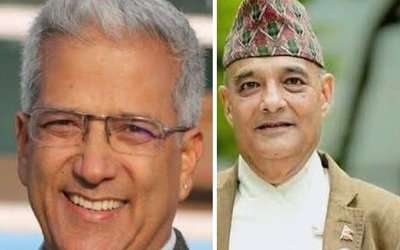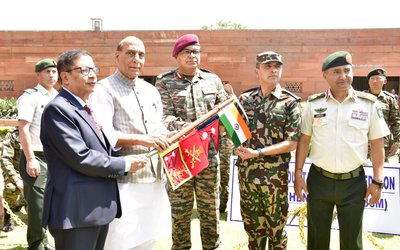Tihar is synonymous with sweets. All the sweet shops in Nepal will do brisk business in Tihar. But this may, all too sadly, also be the time to reflect on dangers of eating “mithais” to our hearts’ content. These “mithais” are the equivalent of chocolates in the Western world. When we are in a celebratory mood, we buy a box of “mithais” just like Westerners buy a box of chocolates and share this with our relatives and friends. Binging on “mithais” (just like eating too much chocolate) or eating them on a regular basis may predispose us to diabetes. In present day South Asia, in the list of diseases, diabetes is sure grabbing headlines.
This is because South Asia holds the dubious distinction of the largest collection of diabetics in the world. The amazing thing is that in the Western world the diabetic is usually a fat person, but unfortunately for us in South Asia the thin slender person too has a good chance of suffering from diabetes. In other words we seem to be acquiring this disease even without some of the major risk factors( like obesity) as in the West. This may mean we need to be more careful. For example, the cut-off for the waist size for a Western male that can tip him into having metabolic problems ( like diabetes) is 40”. But for South Asian male, the cut- off may be just 37” or38”. Life does not seem fair.
And clearly this rampant disease( diabetes) is the king of cardiovascular problems; that means a greater likelihood of strokes, heart attacks, kidney failures, and blindness to name some of the important complications of diabetes. At least with our widespread, infectious illnesses like TB, malaria, and typhoid, there are antibiotics that will cure the problem. Unfortunately with cardiovascular illnesses, often it is control of the disease rather than cure which is realistic. Furthermore in a poor country like Nepal the financial consequences of the treatment of cardiovascular illnesses are all too daunting.
As though this were not enough, there may also be a genetic component that predisposes people from South Asia to heart disease. When studies were carried out in South Asians living in the UK, it was found that the South Asian population had a higher risk of heart disease than the local UK populationfor the same gender and age group. Similar studies have also come out of the USAamong South Asians. In fact, a well established cardiac gene defect ( MYBPC3) has been shown to afflict 4 % of the South Asian population predisposing them to cardiovascular illness. Four percent in South Asia translates to millions of people. Indeed even the WHO says that South Asia will soon be the hub for cardiovascular illness.
So why bring up this“doom and gloom” news during this magnificent festival of lights? There may be genetic predispositions to illnesses for which we are incapable of doing anything. But there are good health habits within our control that Diwali lights can remind us of: Eating less sweets and oil soaked kebabs, going for morning walks to get out of that sedentary lifestyle, keeping our blood pressure under good control with medicines if necessary, checking our cholesterol level, and finally stopping smoking. Unquestionably the health risk of smoking in Kathamandu valley with its rampant pollution is a true double whammy.

Buddha Basnyat MD
Buddha Basnyat, MD, MSc, FACP, FRCP, Director of the Oxford University Clinical Research Unit-Patan Academy of Health Sciences, Kathmandu.
- Altitude Sickness
- Feb 20, 2018
- Post-earthquake Nepal: The Way Forward
- Dec 13, 2015
- The Annapurna Sanctuary
- Nov 29, 2015
- Diarrhea at the Summit
- Nov 08, 2015
- Altitude Sickness ( AMS, HAPE, HACE)
- Oct 15, 2015





